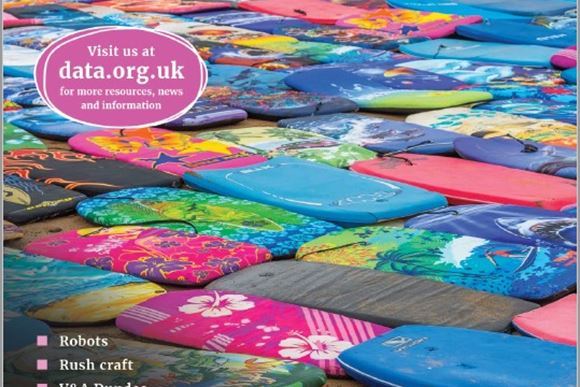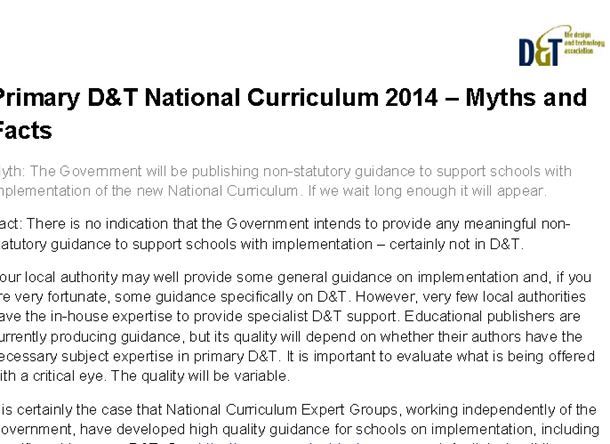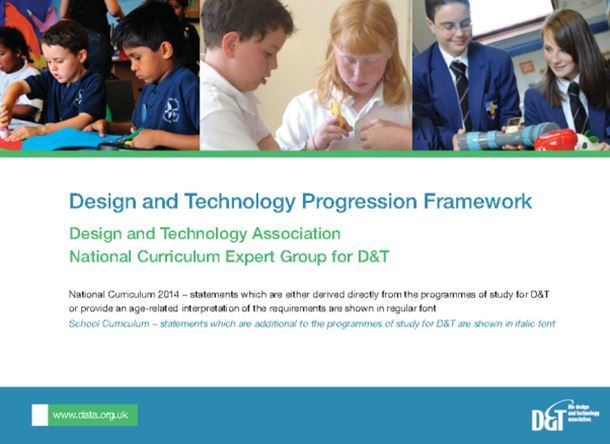Editorial for Designing Magazine 2019 - issue 113
Published 7th June 2019
Written by: Tony Ryan
With the GCSE Non-Examined Assessment (NEA) and written examination now done and dusted, this feels like an opportune time to commit this to paper.
It was clear when I took up this post that there was a considerable challenge associated with the position. The subject has battled resolutely against many external pressures imposed upon it and leading the continued push to gain acceptance of the subject within the school system was essential.
Over my time in education I have led three departments, went on to line manage the subject as a Deputy Headteacher and finally had responsibility for two strong departments as a Headteacher. The constant across my almost 33 years in teaching was design and technology and specifically what it offered students of all abilities, gender and socioeconomic background.
Across the years I have seen the subject evolve from CDT to D&T across separate disciplines and finally into the new qualification that stands today. I have to say that if the current qualification had been in place many years ago, I believe that the subject would be in a much better place today. I will go on to qualify this statement, I am more than aware that this is a sentiment that splits the D&T community at the moment.
Stephen Stanton, Senior Policy Advisor for the subject in the DfE recently asked the rhetorical question “If this subject were to disappear from the curriculum tomorrow, what vacuum would that leave and why would that matter?” This question is one that drives deep to the very heart of our existence and I believe it is one that each and every one of us should be able to confidently answer.
I see numerous posts on Facebook groups within which teachers lament the time when students ‘made a product of worth, something that they could be proud of’. Craft, attention to detail and manual dexterity has always been an integral part of our subject and rightly so. That said, our task as educators is surely to look at the bigger picture and equip students with the knowledge, skills, attributes and experiences that will serve them well in a fast-changing world. The ability to create a neat wood joint, neatly weld metal together or create an elegant piece of clothing has its own value, but does it really prepare students for emerging fields of work and jobs that have not yet been created?
Had a single title GCSE been introduced when the National Curriculum was implemented, instead of allowing the single material specialist endorsed GCSE titles to continue, the concept of identifying and responding to challenges would have been well established. Instead the subject continues to suffer from attempts to define it by arbitrary collections of materials and related processes. The subject community needs to rally and support one another in teaching the new qualification, to provide high quality D&T experiences for all students. Diversification will further arm those who are at best ambivalent about the prospect of the subject being eradicated from the English curriculum.
Recent projections by OFQUAL show a further drop of 27% for D&T entries this year. There are a number of reasons for this, the main ones being: a lack of subject experts in the field – even outstanding schools and departments report an inability to successfully fill vacant posts, the Ebacc and continued school austerity resulting in a narrowing of the curriculum offer in many schools, pressure from Progress 8 forcing department leaders to seek out the most successful examination routes for their students. These have all added to this dramatic fall in the overall entry figure.
With the exception of MFL, the entry number for all EBacc subjects has significantly increased. It was almost inevitable that non-Ebacc subjects would take a hit, this estimated to be around 9% less than in 2018. Since the announcement of EBacc in 2010, D&T has seen an exponential fall. This year alone, experiencing a drop from 117,605 (2018), to an estimated 90,805. This represents the lowest entry figure since 2014 when the requirement for all students to study National Curriculum D&T at Key Stage 4 was rescinded.
What really concerns me is the drift from D&T to Art & Design GCSE, this in part accounts for the increase in Art & Design entries of just over 15,000 this year. Anecdotes from forums and teachers with whom I’ve met give the assessment methodology associated with this qualification as their main motivation for moving. Others state that either they don’t feel confident delivering and/or their students don’t enjoy the core content of the D&T GCSE. They consider that this can be circumvented by teaching ’soft D&T‘ under an Art & Design banner. The core content can be taught through active means and does not have to be ‘dry’; a lack of confidence can be addressed through training and I really do not accept the selection of a specification because “the students prefer it”. If Mathematics or Science adopted this approach, huge sections of their examination specification would remain uncovered.
I do sympathise with D&T teachers who have been asked to deliver the new requirements, content and a specification that affords their students greater levels of autonomy. This in often without any subject training other than a one-day course run by the relevant Awarding Organisation. I also fully understand the pressure to deliver results that will create positive Progress 8 results in schools, but I come back to the original question posed... “if this subject were to disappear from the curriculum completely, what vacuum would it leave and why would that matter?”
The uniqueness of the subject resides partly in requiring students to address contextual challenges. Students must identify for themselves a real, live – not hypothetical – situation wherein lies a possibility to improve the quality of life or situation. Involving a real client, they create a design brief and apply their design and technological capability developed over a period of years to develop proposals, meeting and discussing with them along the way. Where else does that happen on the school curriculum? By providing contexts for applied mathematics, science, geography and other subject content, we are embedding and deepening learning gained elsewhere in the curriculum.
Both the CBI and the World Economic Forum have published papers outlining the top skills that will be required in the workplace in years to come. Four of the top five are:
- complex problem solving
- critical thinking
- creativity
- coordinating with others
These can be observed taking place daily in D&T classrooms. Have no doubt about it, business and industry value our subject and the experiences, skills and knowledge that it offers students. As one senior industrialist stated in conversation recently, “you can tell a student that has had a good D&T education, there is just something about them, a confidence that makes them stand out from the crowd”.
The new qualification is challenging and is meant to be. Our students are entering a world filled with opportunity and competition in equal measure, so we need to prepare them to face this with confidence. The D&T Association continues to work tirelessly with government and other decision-making bodies, to obtain just recognition for the subject and to secure its future. The vacuum that would be left if the subject was lost from the school curriculum would in my opinion be significant and far reaching. It is one that we at the Association are not willing to sanction.
Tony Ryan Chief Executive
June 2019
comments powered by Disqus Back to Blog








